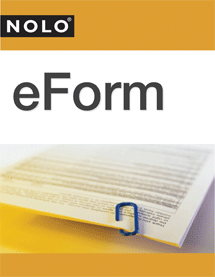Learn how long it takes to get an FHA, VA, USDA, or conventional mortgage loan after Chapter 7 or Chapter 13 bankruptcy.
Filing for bankruptcy, while a significant financial event, doesn't have to permanently hinder your ability to own a home. Over the years, lenders have adopted more accommodating policies, allowing individuals who have filed for bankruptcy to reenter the housing market sooner than was previously possible. For many, the average waiting period to qualify for a mortgage is now approximately two years.
This article provides a comprehensive overview of the mortgage options available to individuals with a bankruptcy history. It outlines the eligibility requirements for various loan programs, including those offered by the Federal Housing Administration (FHA), the United States Department of Agriculture (USDA), the Department of Veterans Affairs (VA), and conventional lenders, and explains how different types of bankruptcy filings, such as Chapter 7 and Chapter 13, impact the approval process.
Additionally, it provides insight into strategies for rebuilding credit, meeting lender expectations, and how to potentially shorten the waiting period.
- Mortgage Waiting Periods After Bankruptcy: Summary Table
- FHA Loan Waiting Periods After Bankruptcy
- USDA Loan Waiting Periods After Bankruptcy
- VA Loan Waiting Periods After Bankruptcy
- Conventional Loan Waiting Periods After Bankruptcy
- Additional Mortgage Lender Requirements After Bankruptcy
- How to Rebuild Credit After Bankruptcy
- Tips for Getting a Mortgage After Bankruptcy
Mortgage Waiting Periods After Bankruptcy: Summary Table
The table below summarizes the typical waiting periods required after a bankruptcy before you can qualify for various types of home loans. Waiting periods may vary based on lender policies and extenuating circumstances.
| Loan Type | Chapter 7 Waiting Period | Chapter 13 Waiting Period |
| FHA Loan | 2 years after discharge (can be reduced to 1 year with extenuating circumstances) | Eligible after 12 months of on-time plan payments with court approval |
| USDA Loan | 3 years after discharge (may be reduced to 1 year with extenuating circumstances) | Eligible after 12 months of on-time plan payments; earlier with exceptional circumstances |
| VA Loan | 2 years after discharge | Eligible after 12 months of on-time plan payments with court approval |
| Conventional Loan | 4 years after discharge or dismissal (2 years with extenuating circumstances) | 2 years after discharge or 4 years after dismissal (2 years with extenuating circumstances) |
FHA Loan Waiting Periods After Bankruptcy
An FHA loan is a federally insured loan. It's generally attractive to first-time, cash-strapped home buyers because it offers the ability to put down as little as 3.5% of the purchase price. Additionally, the credit score requirements are more liberal than conventional loans. You'll likely qualify with a credit score of 580 and 3.5% down or 500 and 10% down.
Qualifying for an FHA Loan After Chapter 7 Bankruptcy Discharge
In most cases, you'll need to wait two years from the date of your Chapter 7 bankruptcy discharge before you'll qualify for this loan. (See HUD Handbook 4000.1 II.A.4.b.iii(F) and II.A.5.a.iii(H) (2025).)
Keep in mind that a discharge date isn't the same as the filing date. The court sends out the bankruptcy discharge paperwork just before your case closes. During the most recent two years, you must:
- Reestablish good credit. Meeting credit requirements won't be as much of a hurdle as you might think. If you open new credit accounts after your bankruptcy, you'll need to show that you've established a good credit history by paying your payments on time.
- Choose not to incur new credit obligations. Or FHA has another rule: You can qualify by choosing not to open any credit accounts after bankruptcy. (See HUD Handbook II.A.5.a.iii(H) (2025).)
Also, you might be able to speed up the process using the 12-month exception. At times, people file for bankruptcy due to no fault of their own. If you fit into this category and can demonstrate that filing for bankruptcy was beyond your control, you might be able to reduce the waiting period to 12 months. You'll also need to show that you've handled your financial affairs responsibly after the bankruptcy. (See HUD Handbook II.A.5.a.iii(H) (2025).)
Getting an FHA Loan During or After Chapter 13 Bankruptcy
Filing for Chapter 13 bankruptcy is a three- to five-year process, but that doesn't mean that you can't buy a house during that time. You can obtain an FHA loan before you complete your plan if you meet the following conditions:
- You've paid 12 months of plan payments.
- The court approves your request to purchase a house with an FHA loan.
- You can demonstrate that the reason you filed for bankruptcy is unlikely to occur again. (See HUD Handbook II.A.5.a.iii(H) (2025).)
Keep in mind that the court might not be on board if you'd have to reduce the amount paid to your creditors in your plan to qualify for a home loan. If you're considering this option, you should consult with a knowledgeable bankruptcy attorney before filing. A lawyer can advise you about the feasibility of a future loan qualification and, if possible, assist you by putting together a repayment plan that will help you reach your goal.
USDA Loan Waiting Periods After Bankruptcy
Low- and middle-income borrowers willing to purchase a home in a rural community will benefit from a USDA loan. It offers a low-interest, no down payment option for those who might not otherwise be able to qualify for conventional financing.
Qualifying for a USDA Loan After Chapter 7 Bankruptcy
Applicants will be eligible for this loan three years after receiving a Chapter 7 discharge. However, if you qualify for the exceptional circumstances exception (for instance, by demonstrating that the bankruptcy was beyond your control and not a result of financial mismanagement), you might be able to qualify as soon as 12 months after the discharge. (7 C.F.R. § 3555.151(i)(3) (2025).)
Getting a USDA Loan During or After Chapter 13 Bankruptcy
A Chapter 13 bankruptcy filer can apply after 12 months of successful plan payments, or sooner on a showing of exceptional circumstances. (7 C.F.R. § 3555.151 (2025)(i)(4).) To find out more, visit the United States Department of Agriculture Rural Development website.
VA Loan Waiting Periods After Bankruptcy
The VA loan program is a benefit given to veterans to help with housing needs. Here are some of the hallmarks of this loan program:
- no down payment
- no minimum credit score
- greater allowance of seller credits and concessions than other loans, and
- unlimited use of the loan program.
Qualifying for a VA Loan After Chapter 7 Bankruptcy
The VA considers your credit reestablished after bankruptcy when you've had two years of clean credit. (See VA Lenders Handbook M26-7, Topic 7(b) (2025).) Keep in mind, however, that individual lenders participating in the VA program can require a specific credit score.
Getting a VA Loan During or After Chapter 13 Bankruptcy
If you've finished making all payments satisfactorily under the plan, the lender may conclude you've reestablished satisfactory credit. Also, if you've satisfactorily made at least 12 months' worth of the payments under the plan and the trustee or the bankruptcy judge approves of the new credit, the lender may approve the loan. (See VA Lenders Handbook M26-7, Topic 7(b) (2025).)
Conventional Loan Waiting Periods After Bankruptcy
Private loans, such as a conventional loan, aren't insured by the government. Instead, you'll protect the lender against loss by paying private mortgage insurance each month. The insurance carrier will pay the lender if you're unable to make good on your obligation. One benefit, however, is that you'll likely be able to stop the insurance payment once the property equity equals 20% of the initial mortgage amount. (The insurance associated with an FHA loan won't go away for the duration of the loan.)
Conventional loans have the longest post-bankruptcy waiting period, overall, but they've eased a bit. Depending on your circumstances, you'll wait two to four years.
Qualifying for a Conventional Loan After Chapter 7 Bankruptcy
You'd be eligible 24 months after the discharge or dismissal if the bankruptcy were beyond your control, or after 48 months if the discharge was due to financial mismanagement. (For example, see Fannie Mae Selling Guide B3-5.3-07, Significant Derogatory Credit Events — Waiting Periods and Re-establishing Credit (2025).)
Getting a Conventional Loan During or After Chapter 13 Bankruptcy
You'll need to wait 24 months after receiving your discharge, or 48 months after a dismissal (cases often get dismissed for failing to complete a plan). Some lenders might consider a 24-month waiting period if the circumstances were beyond your control. Circumstances beyond your control often include divorce, illness, and sudden loss of income. (For example, see Fannie Mae Selling Guide B3-5.3-07, Significant Derogatory Credit Events — Waiting Periods and Re-establishing Credit (2025).)
Additional Mortgage Lender Requirements After Bankruptcy
It won't come as a surprise that you'll need to meet other criteria, too. Individual lenders could impose tougher guidelines. Even so, with persistence, it's likely that you'll find a bank that will be willing to work with you.
How to Rebuild Credit After Bankruptcy
If you've experienced a major setback to your credit, such as a foreclosure or bankruptcy, but have since regained financial stability, it could be time to start rebuilding your credit. Some steps are pretty easy, like checking your credit reports for errors and correcting them. Others require more effort and consistency, such as staying current on all your bills to avoid falling behind again. Interestingly, one effective strategy for rebuilding damaged credit is to responsibly open new credit accounts. While it might seem counterintuitive, using new credit wisely can help rebuild your bad credit.
For comprehensive information on how to repair your credit, get Credit Repair, by Amy Loftsgordon and Cara O'Neill (Nolo).
Tips for Getting a Mortgage After Bankruptcy
During the waiting period after bankruptcy, it's important to focus on rebuilding your credit and saving for a down payment. Be sure to gather and safely keep all of your bankruptcy paperwork, especially documents showing your discharge or dismissal date, because this information is essential for determining when you'll be eligible for a mortgage. Once you're ready, get preapproved with a lender.
Taking these steps, along with understanding your loan options and the various waiting periods, can help you successfully navigate the loan process and improve your chances of qualifying for a mortgage after bankruptcy.
- Mortgage Waiting Periods After Bankruptcy: Summary Table
- FHA Loan Waiting Periods After Bankruptcy
- USDA Loan Waiting Periods After Bankruptcy
- VA Loan Waiting Periods After Bankruptcy
- Conventional Loan Waiting Periods After Bankruptcy
- Additional Mortgage Lender Requirements After Bankruptcy
- How to Rebuild Credit After Bankruptcy
- Tips for Getting a Mortgage After Bankruptcy



